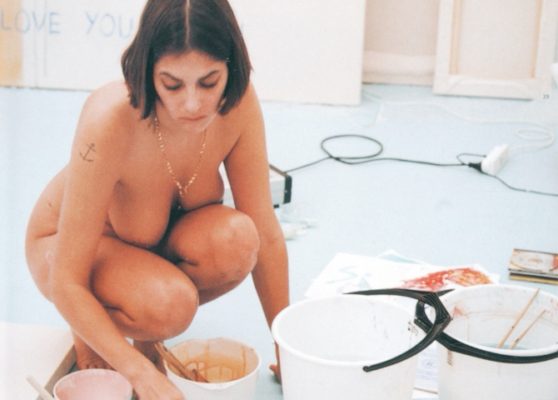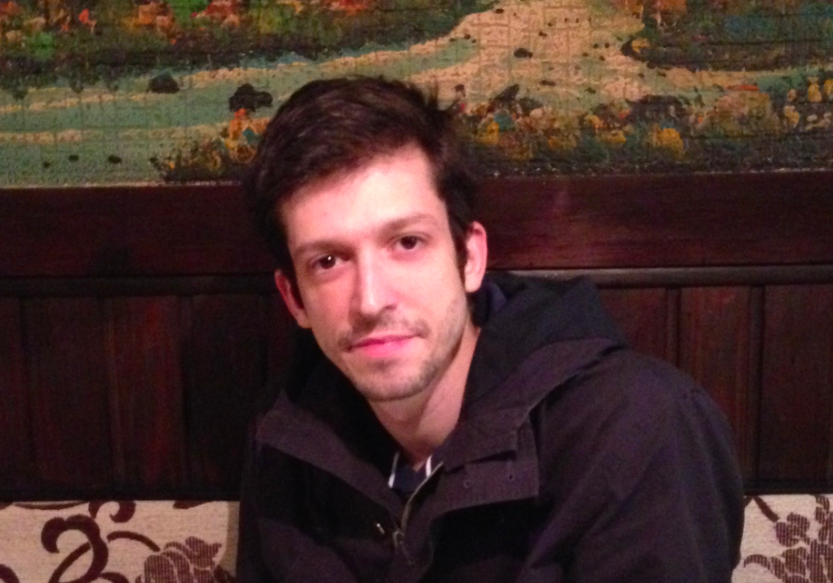Search
To search for an exact match, type the word or phrase you want in quotation marks.
A*DESK has been offering since 2002 contents about criticism and contemporary art. A*DESK has become consolidated thanks to all those who have believed in the project, all those who have followed us, debating, participating and collaborating. Many people have collaborated with A*DESK, and continue to do so. Their efforts, knowledge and belief in the project are what make it grow internationally. At A*DESK we have also generated work for over one hundred professionals in culture, from small collaborations with reviews and classes, to more prolonged and intense collaborations.
At A*DESK we believe in the need for free and universal access to culture and knowledge. We want to carry on being independent, remaining open to more ideas and opinions. If you believe in A*DESK, we need your backing to be able to continue. You can now participate in the project by supporting it. You can choose how much you want to contribute to the project.
You can decide how much you want to bring to the project.

The work of Tracey Emin (1963) can be read as an autobiography constructed out of materials and imaginary fragments that are charged with feelings, emotional hyperactivity and a variable dose of psychopathology, unfurled amidst the heydays of British art in the nineties, and by extension, all contemporary art as an industry. Passed through the filter of this industry, the defiant mixture, of private life, recalcitrant sexuality and anxiety attacks results in a collection of living documents — videos, installations, watercolours, neon sculptures, texts…— that simultaneously imbibe the intimate and the spectacular: in the self-construction of a public figure and the aftermath of domestic upsets, with arrogance and vulnerability.
Tracey Emin. How It Feels —a selection of five of her videos— andProximidad del amor —an anthology of her columns in The Independent, published in collaboration with Editorial Mansalva— are the tools which MALBA places at the disposal of the Buenos Aires public, a not insignificant vein of Emin’s work that articulates two different series of transpositions: that of her life in the work—traceable in the videos— and that of the artist as celebrity, that appears in the columns, written in a frank and direct style, for a reader of newspapers—more specifically showbiz news, or even gossip.
If the videos —selected by the curator, Philip Larratt-Smith— trace their cycle from the middle of the nineties to 2000, the columns are, on average, written ten years later. So what is put into perspective are not just the changes in Emin’s career but also the form in which they were supportive of the restructuring of the art industry into a subsystem of the global spectacle.
To the same extent that the videos like Why I Never Became a Dancer (1995) and How It Feels (1996) stage a strong desire for the self-construction of a character, it is clear that Tracey Emin reinvested her repertoire of artistic attitudes in the media system, and—after having appeared drunk a couple of times on camera and stumbling on the red carpet— it didn´t take long to provide her with national fame, as the emotional and sincere female figurehead of the British art system of the moment—a sincerity that encompasses the relation not so much with the word itself, as above all with a public avid for the confessions of the famous.
In the columns for The Independent —selected and translated by Cecilia Pavón from the original anthology, My Life in a Column, published by Rizzoli last year —the display of sincerity constructs a pact of reading that is subordinated to the celebrity system: personal conflicts, drugs, divorces— that accompany a form of moral reflection about what it means to have a public life, the point of departure for which was a work constructed in its time around the exhibition of her private life. Celebrities such as Paris Hilton or Kim Kardashian daily convert their life into a product with which the audience can identify: their clothes, the handling of their boyfriends and their favourite dishes are a sort of constantly updated moral practice: they mark a course by which their fans can orientate their own lives. What, for authors like Isabelle Graw and others, is the point of departure for the culture of celebrity, the fact of converting one’s own life into a brand, implicitly carries the possibility of converting this brand into an exemplary tale: the public light of celebrities illuminating private lives with subjects as varied as clothing, struggles with addictions or being overweight. In the case of Tracey Emin, her handling of solitude, sex and drugs configures a mediated process for autobiography on an aesthetic and humorous basis: the permanent hybridisation of the private and the public turn into an element of defiance, as if one of the attributes of the confessional discourse was the power to uncover someone else’s vulnerabilities.
As Fernanda Laguna observes in one of the entries in the exhibition catalogue, the works with a self-referential bias implicitly carry a collective ritual, to the extent that they make it possible to be “rearmed” by other people, that is to say by the audience. In the work of Tracey Emin, as in the celebrity system, this collective aspect is transferred to the masses. Reliving their everyday hardships and joys implies incorporating a lesson in life: a life that is, perhaps, too similar to a product.

Claudio Iglesias is an art critic based in Buenos Aires. His latest books are Corazón y realidad (Consonni, Bilbao, 2018) and Genios pobres (Mansalva, Buenos Aires, 2018).
"A desk is a dangerous place from which to watch the world" (John Le Carré)